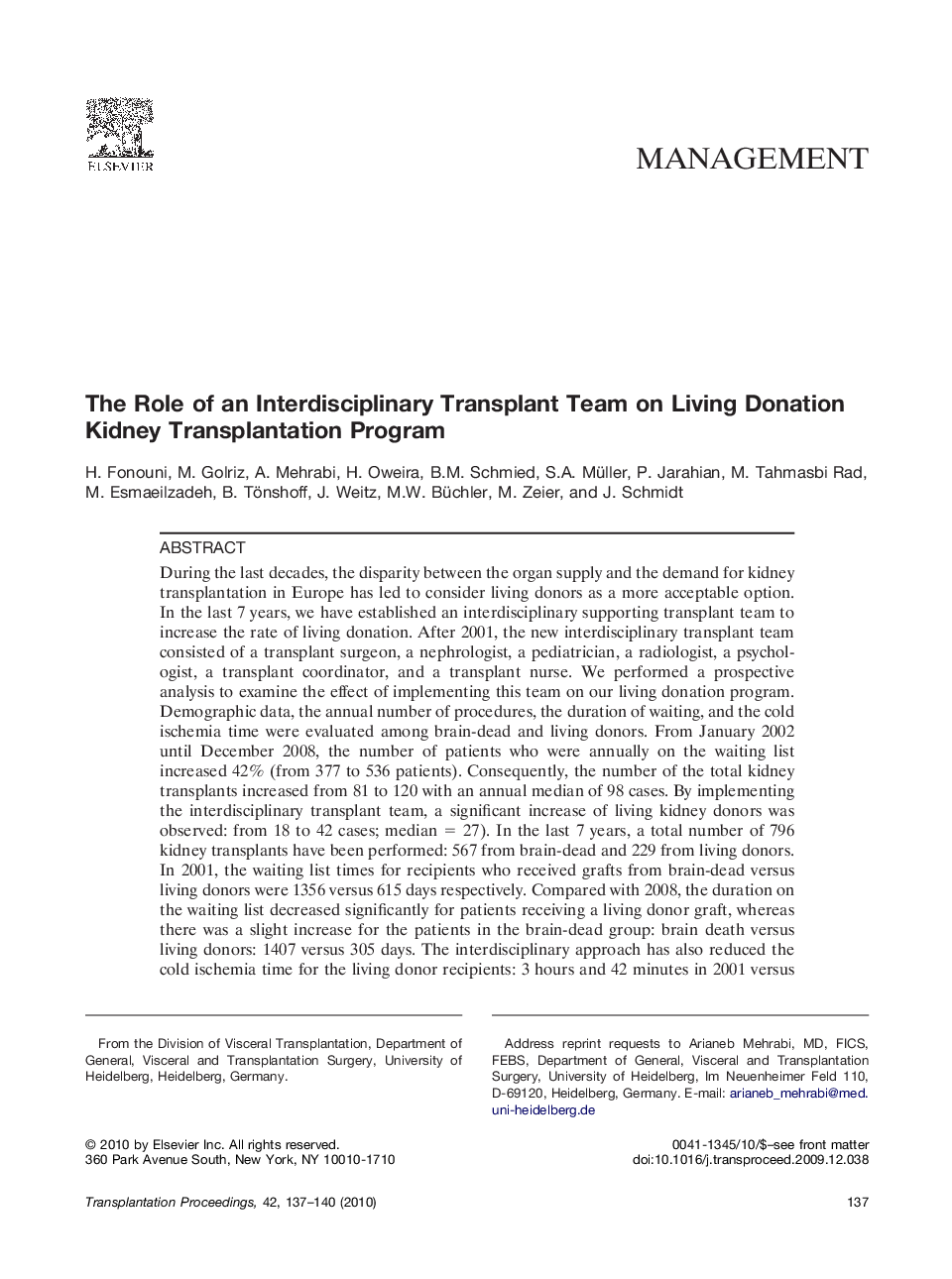| Article ID | Journal | Published Year | Pages | File Type |
|---|---|---|---|---|
| 4260838 | Transplantation Proceedings | 2010 | 4 Pages |
During the last decades, the disparity between the organ supply and the demand for kidney transplantation in Europe has led to consider living donors as a more acceptable option. In the last 7 years, we have established an interdisciplinary supporting transplant team to increase the rate of living donation. After 2001, the new interdisciplinary transplant team consisted of a transplant surgeon, a nephrologist, a pediatrician, a radiologist, a psychologist, a transplant coordinator, and a transplant nurse. We performed a prospective analysis to examine the effect of implementing this team on our living donation program. Demographic data, the annual number of procedures, the duration of waiting, and the cold ischemia time were evaluated among brain-dead and living donors. From January 2002 until December 2008, the number of patients who were annually on the waiting list increased 42% (from 377 to 536 patients). Consequently, the number of the total kidney transplants increased from 81 to 120 with an annual median of 98 cases. By implementing the interdisciplinary transplant team, a significant increase of living kidney donors was observed: from 18 to 42 cases; median = 27). In the last 7 years, a total number of 796 kidney transplants have been performed: 567 from brain-dead and 229 from living donors. In 2001, the waiting list times for recipients who received grafts from brain-dead versus living donors were 1356 versus 615 days respectively. Compared with 2008, the duration on the waiting list decreased significantly for patients receiving a living donor graft, whereas there was a slight increase for the patients in the brain-dead group: brain death versus living donors: 1407 versus 305 days. The interdisciplinary approach has also reduced the cold ischemia time for the living donor recipients: 3 hours and 42 minutes in 2001 versus 2 hours and 50 minutes in 2008. During the last years, by implementing an interdisciplinary transplant team, supporting living donor procedures has produce a gradual increase in the number of kidney transplants from living donors with a remarkable decrease in waiting and cold ischemia times, the latter presumably influencing graft quality.
